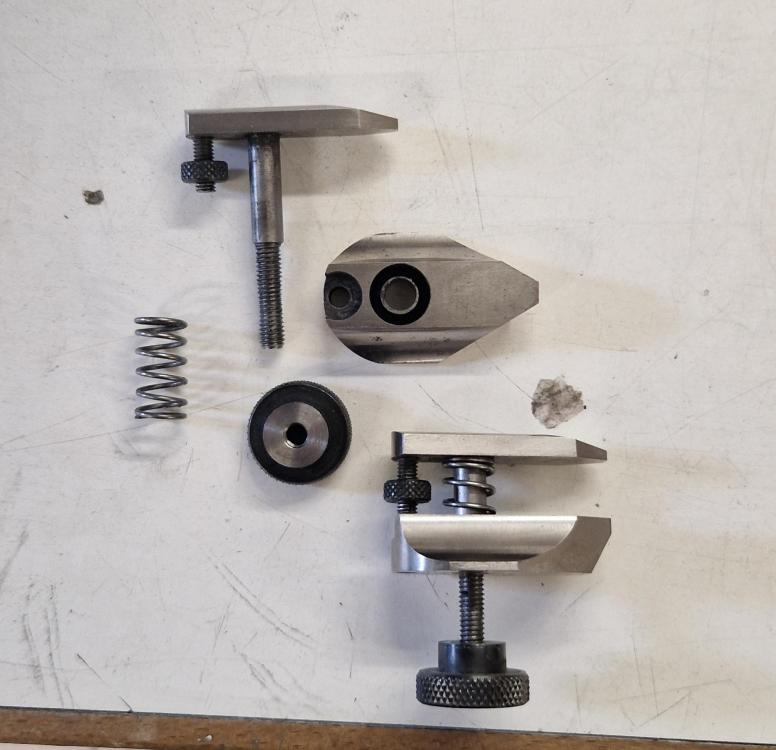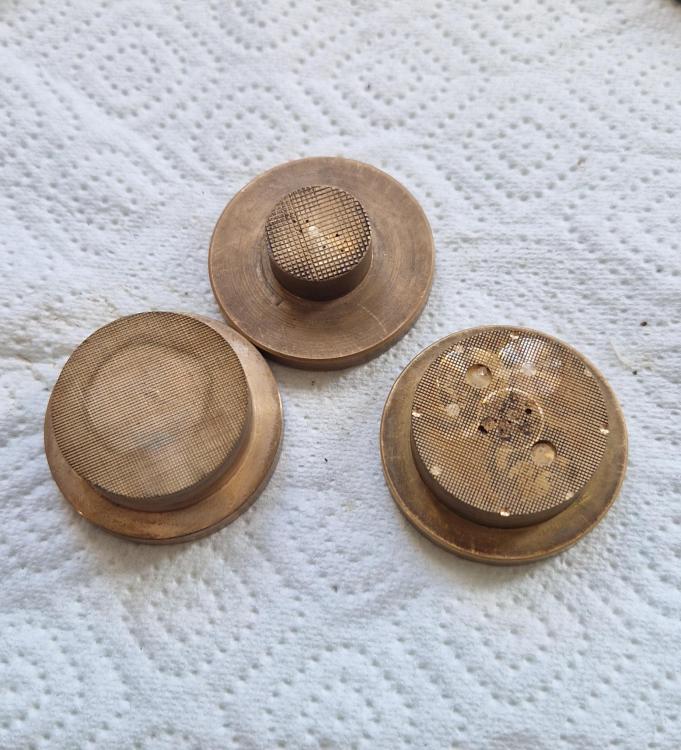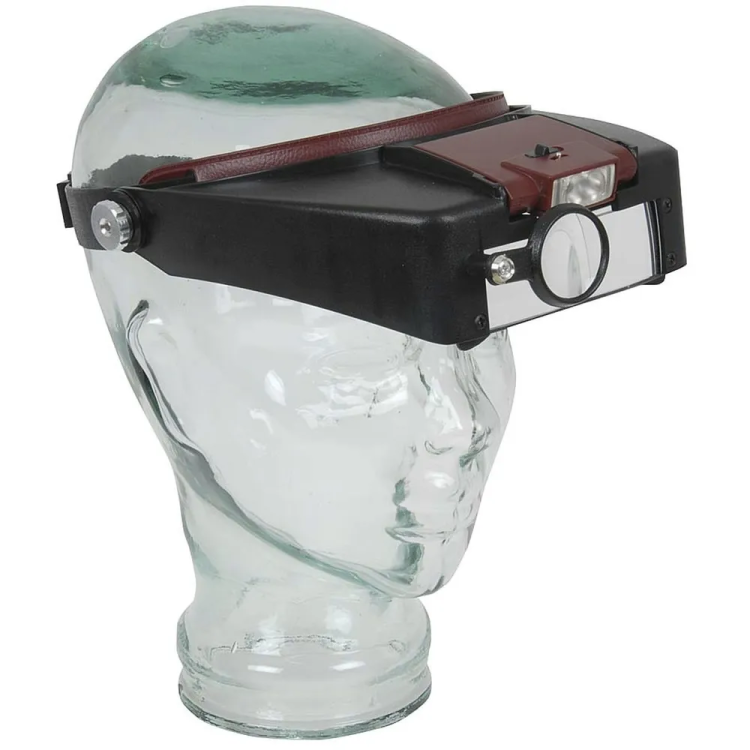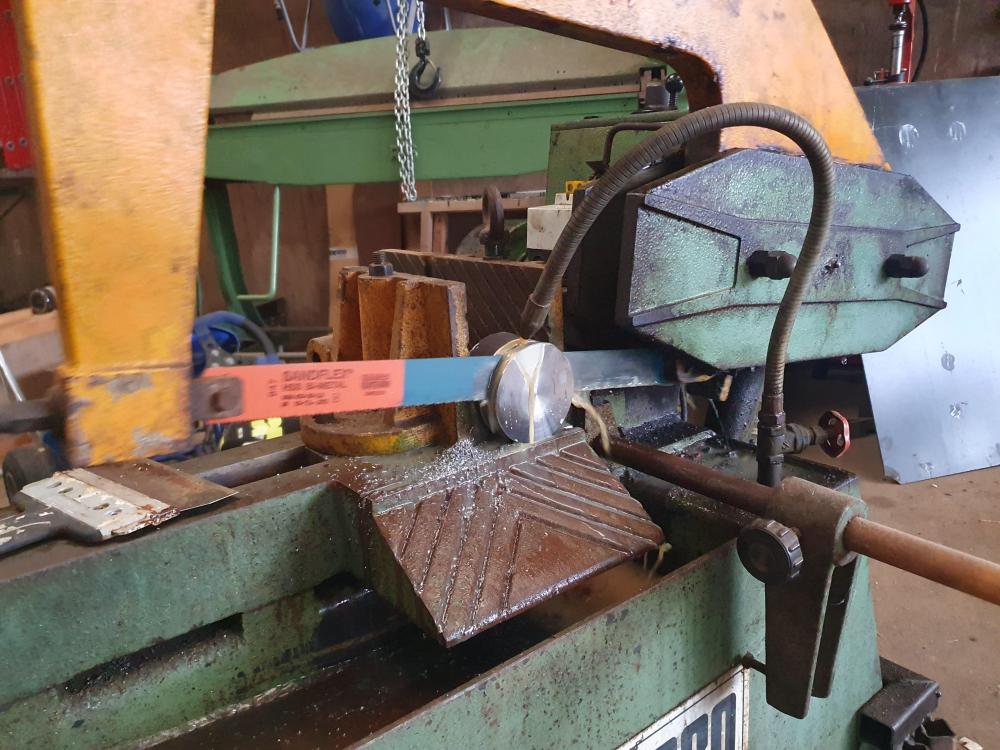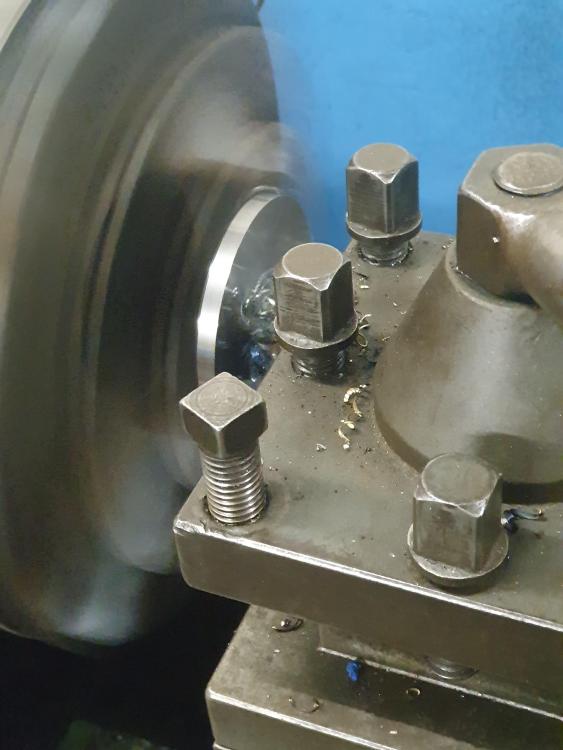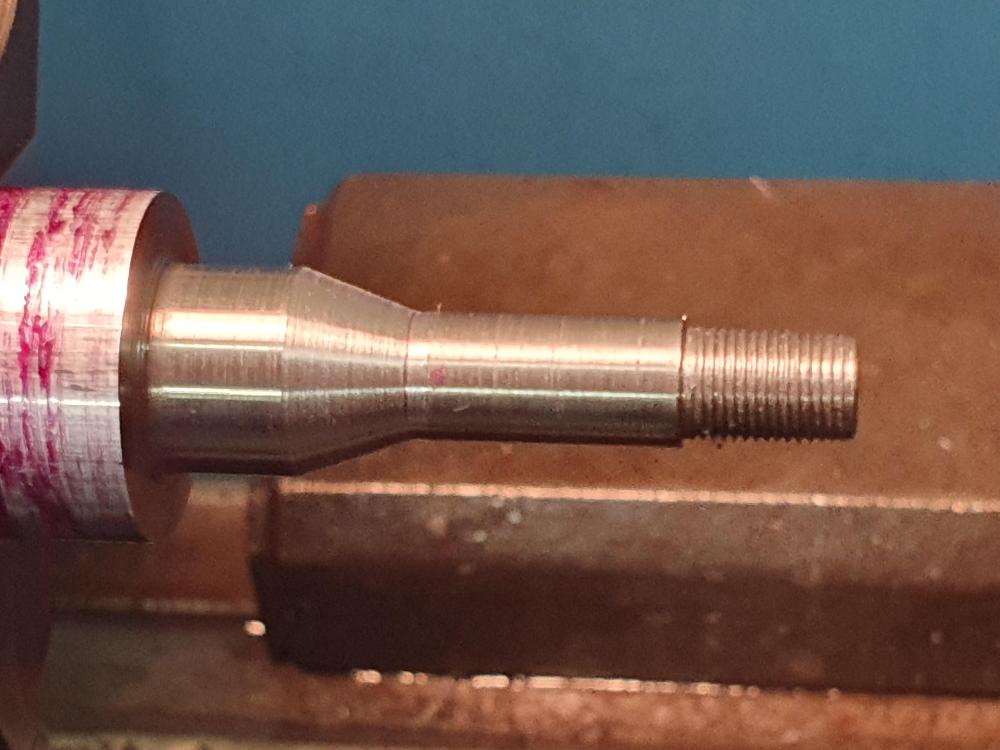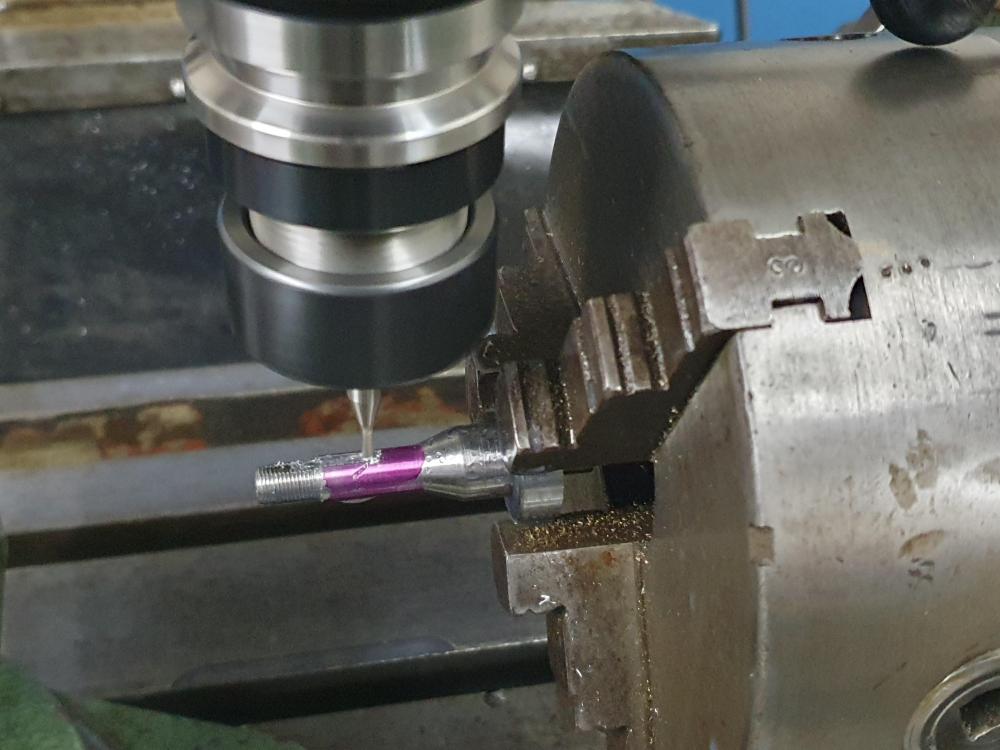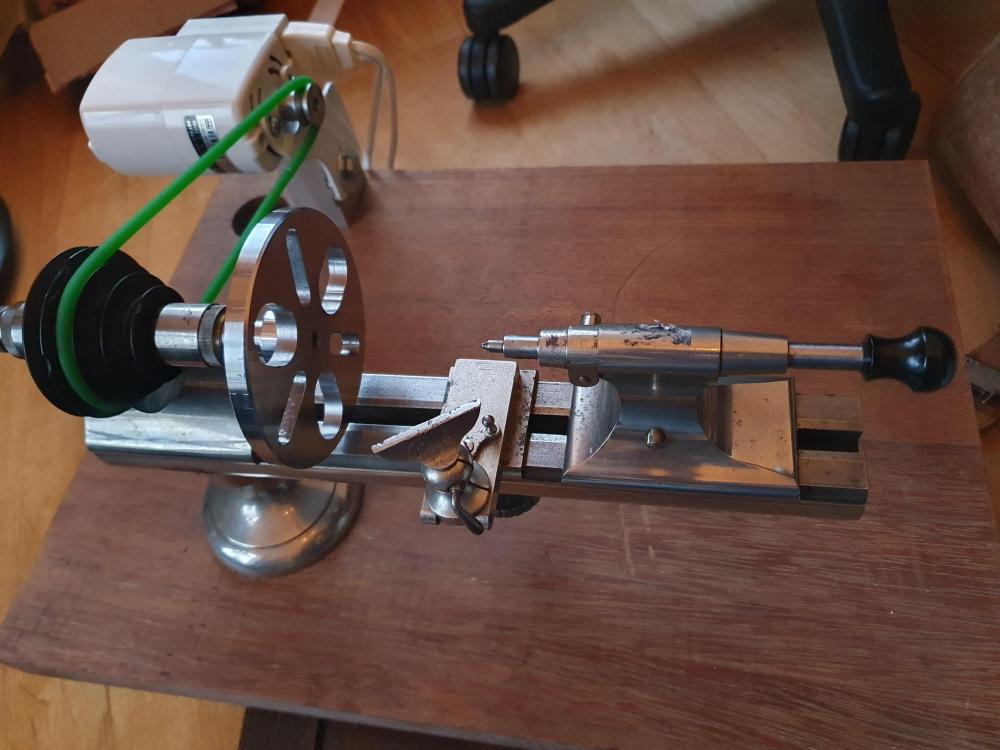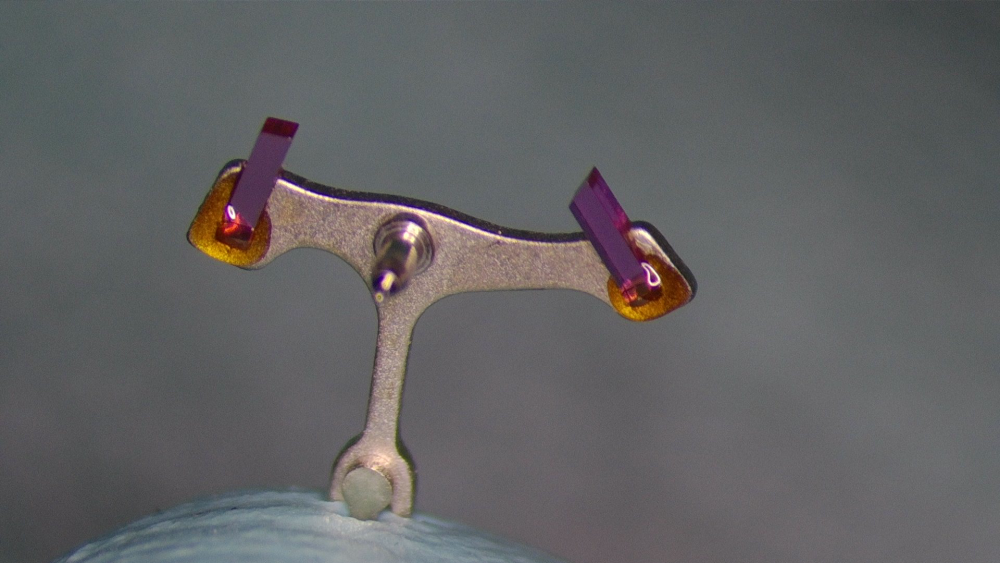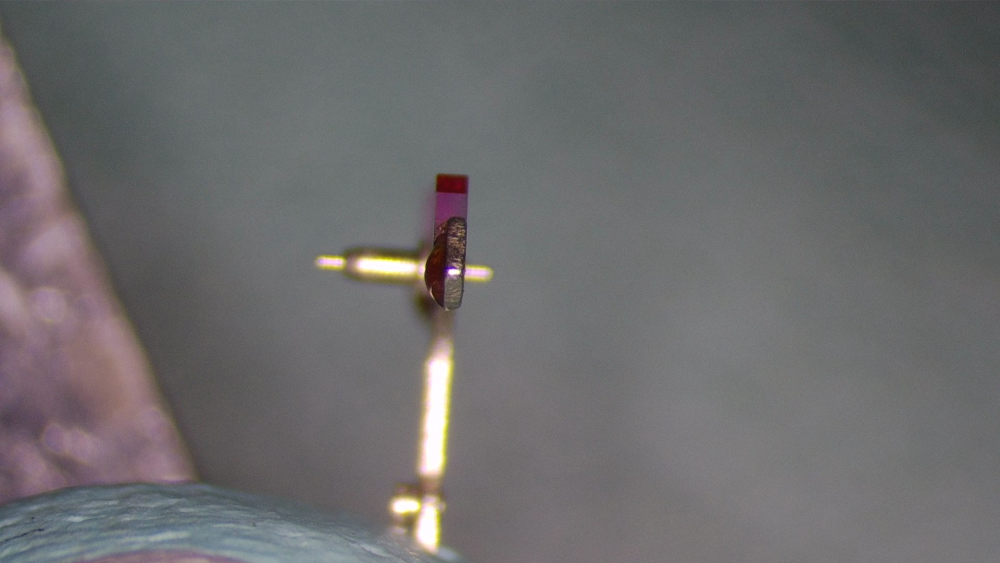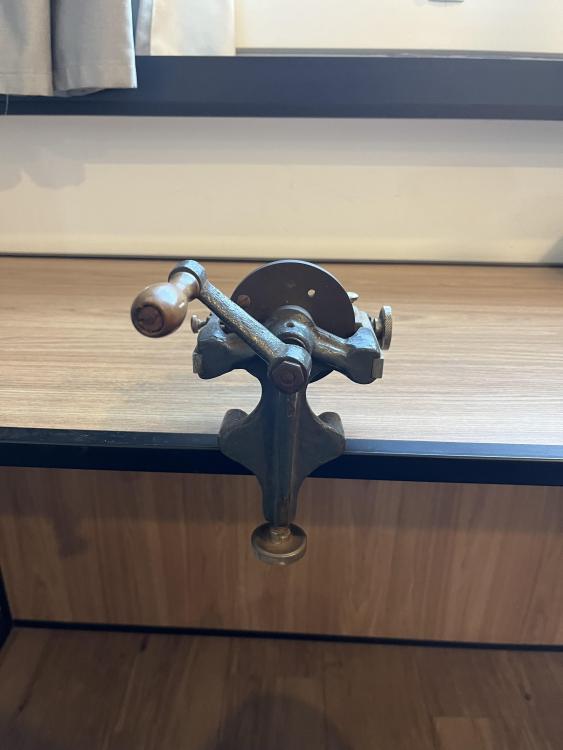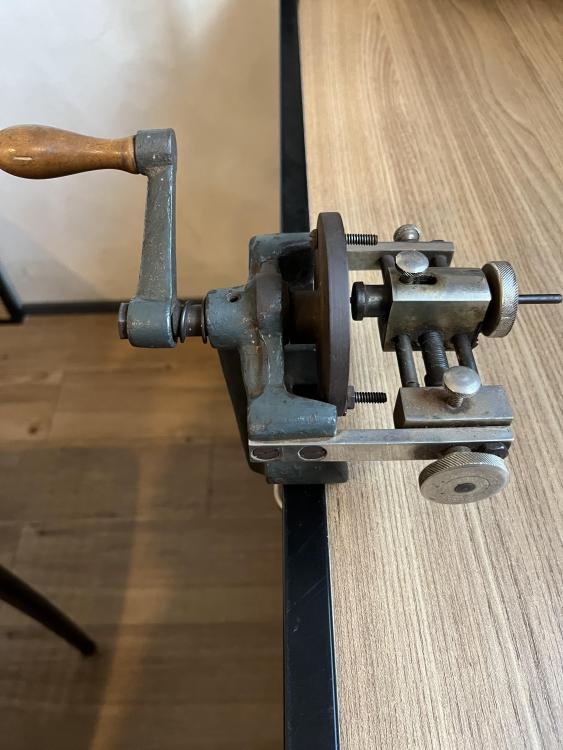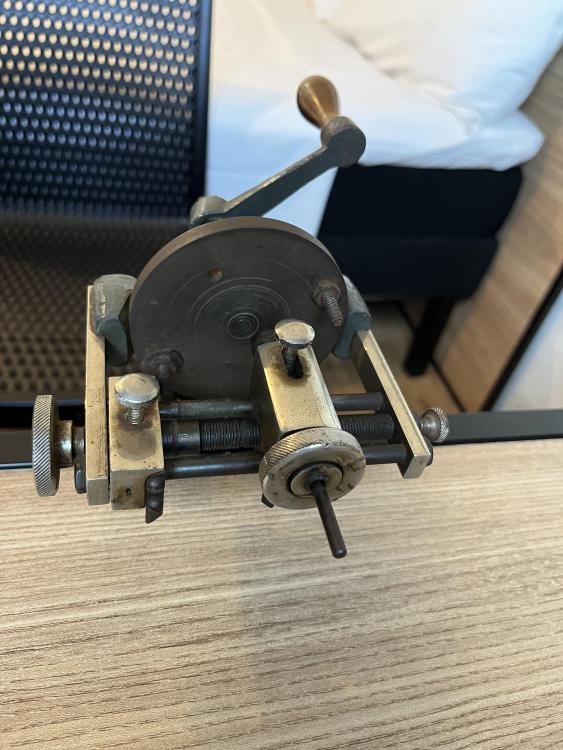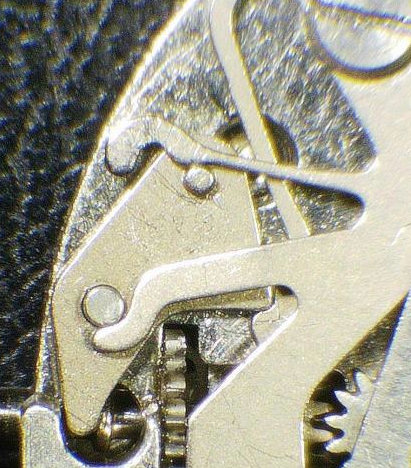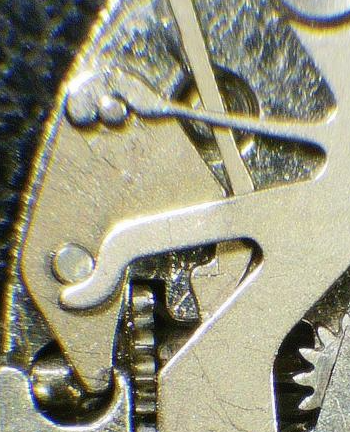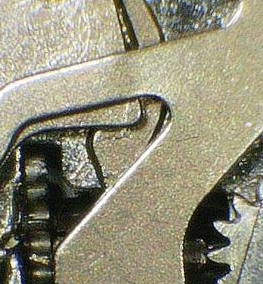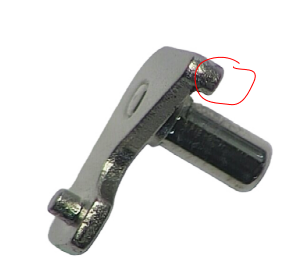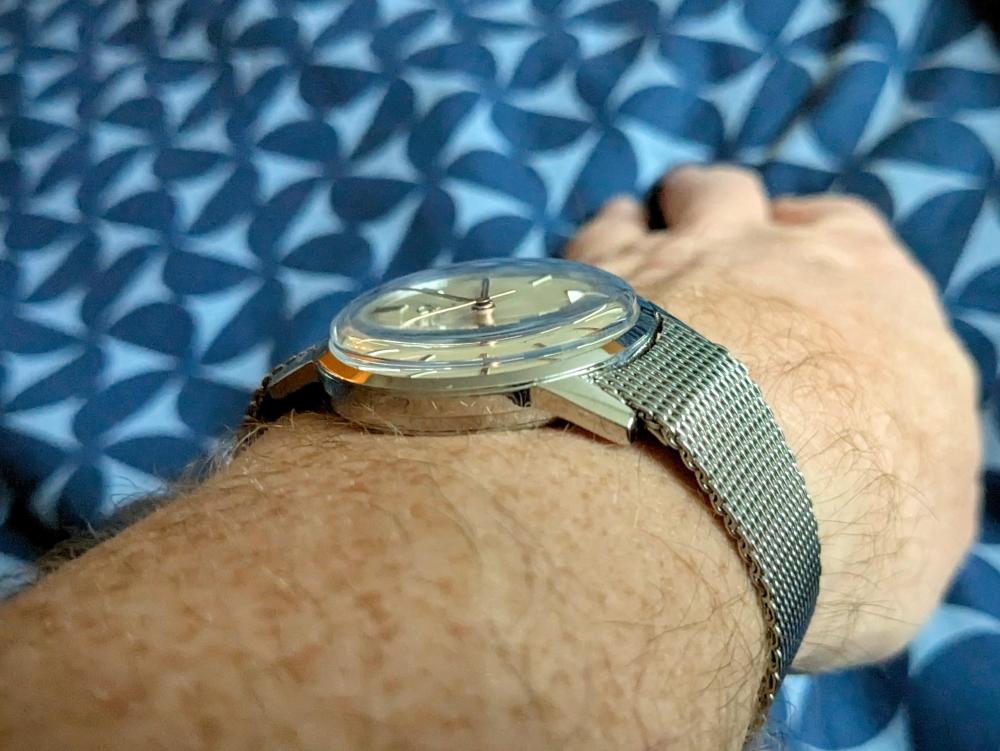Leaderboard
Popular Content
Showing content with the highest reputation on 12/24/24 in Posts
-
Well, it's essentially a big-ass (haha) wax chuck. The advantage is being able to glue parts on conveniently; I use super glue (Loctite 480), then the brass block goes in acetone and a few minutes later the part is off and clean. Since I knock around the block to get it true on the faceplate the part is never at risk. I used to do a perpetual calendar where every hole for a jewel in every bridge got "uprighted" in the faceplate. 11 on the movement side, about that many on the dial side. Mainplate I would screw down to a similar brass block that was purpose-made (I did a lot of these); I could do all the holes in a couple of hours.3 points
-
Thnx for the warning, but yes I have. I don't "need" a faceplate at the moment, but earlier I already had a project where it would have been nice to actually have one. So this seems like a nice project. This is strictly a hobby for me and I like (love!) making and fixing stuff and bringing home stray machines that I can fix/improve. My wife eventually stopped asking me what I will be using any "new" bit of machinery for, because the usual answer is "I don't know yet. Probably making more tools" . The clamps will probably be machined from ground flat stock to skip some steps, but I could use coarser stock as well as I have the tools needed to do the grinding myself (surface grinder, granite plate). What clamp type does you faceplate have (1 or 2 screws?). Have you used the other type as well? Do you have any preferences?3 points
-
A while ago I realized it's sometimes better to ditch gadgets and learn to use your hands. I always thought using a jacot tool must be really hard and I got a rollifit clone. There was a problem and I returned it and got a refund. I forced myself to burnish the old fashioned way and it wasn't that hard after all. I did get some upper back pain from the several days of intense training though. I should work on my ergonomics.2 points
-
I have re-read the post and I agree with @Neverenoughwatches, I wonder if the button has been pressed too hard and bent the spring? Personal, I prefer a set screw to a button. I've had to push really hard in the past, it just felt wrong2 points
-
Yes to both, and most importantly the part glues super flat. The grooves are done with a checkering file, and the top of the block gets a skim cut on the faceplate so the surface is really parallel to the bottom. Part sits on the block, drop of glue on a piece of brass or whatever, then I pick up and feed some in with an oiler here and there around the part. It wicks in to the grooves, which also provide "tooth" for holding. For something with a decent amount of surface area, putting glue on that surface then the part onto a smooth holder can result in significant out-of-flat (hydraulics).2 points
-
All the clamps I have used have been a variation of some sort of this one in the photo (two clamps there, one assembled one apart). The jack screw is to allow the clamp to contact the part parallel, which increases the clamping area and also reduces the chance of dinging the part. I do do quite a lot of faceplate work, and many years ago figured out that I prefer the setup in the third pic. The part is glued to a brass support (second pic), which is centered on the plate optically and held with simple clamps. I can glue and unglue newly made and delicately finished parts with no damage, and also handy for small or odd parts (I think that's a LeCoultre 409 mainplate on the support).2 points
-
Well, we're cooking over here! Friend asked me to look at their son's little quartz. Wasn't running. Once I worked out that I had to remove a plate in the back to be able to get the crown out, I then had to work out how to get the movement out as it was a front loader. Removed the movement locating ring and then gently pushed on the back of the movement and everything came out. All good so far. I had also noticed that the hour hand did not line up with an hour indicator when the minute hand was at twelve. So corrected that. Put the movement back in the case, put the crystal and its holder back in the case. Put the plate in the back of the movement to hold the crown in, 3 screws back in, new battery in and nothing. Took the plate back out again and noticed that the end furthest away from the battery was bent up. Close look showed that it had bent up where there was some angled parts which contacted the CB. Corrected that. Put the plate in and started with the screw that held that end first. Plate tucked in against the CB all nice and snug. There is quite a few scratches on the plate so I am guessing that someone before me has put the screws in and then just pushed on that end to get it to connect properly. Second screw in the middle to secure the crown and stem, then the last screw near the battery. Battery in and another success. Movement locating ring in, snapped the back on and tada. Done with the cheap loupe that I bought with the lenses set up to give me 10x. There is another lens which I can swing over my left eye which gives me 20x at about 30mm away. Haven't told the boss yet, but if I had to inspect anything smaller than what I was doing, my loupe ain't gonna cut it. Anyone have a free stereo microscope that they don't want or need anymore? I have no idea how I am going to broach that subject with 'she who would be queen'. How do you measure movements? Do you measure from the crown edge to the other side or the longest distance which in this case would be 90 degreeses to the crown. It was one of those tiny quartz movements. Probably about 12mm across from the crown edge to the opposite edge, so if I'm not wrong about 5.3 ligne. Compared to three watches that Liz has which were handed down from her mother, you know those teeny, tiny watches. Two are manual, the other is a quartz, this movement would be regarded as quite large. I also have discovered that I need to back off on coffee. When I first started on the watch, I was shaking like a leaf. Cup of coffee sorted out the shakes, but definitely can't be considered to be a solution. I'll also be asking my doctor whether any of the 6 prescription tablets that I am on cause the shakes. Note to everyone: Don't have a stroke. They suck.2 points
-
A small grinding wheel will produce almost the same hollow cut. Try it on the few spare blades that you have to see how you feel about the shape. The traditional wedge has other advantages, you generally want a steep wedge that doesn't quite reach the bottom of the slot, for a better grip. This way will often lift the screw out as well, so that can negate the need to pick up tweezers. The hollow cut touches all of the side of the slot rather than just the top edge , so has less overall chance of chewing the screw head .2 points
-
I'm guessing this means aside from a couple of movement holders, some screwdrivers, tweezers, staking and jeweling tool. For a lot of people the latter two are the "big two". There's _a lot_ of other tools involved. Way outside of a lathe much less Jacot, but some folks use both of those almost (or certainly) daily.2 points
-
Have you looked at the machining involved with the clamps? Have you looked at enough to see there's a general theme? These old guys weren't dumb. That the flat part where the part registers is within fractions of a hundredth of a mm in height? The plate is (relatively) simple, if you have a lathe that can face straight over 100mm. But the clamps? Yeah 3d print them and kind of do ok work and wonder what all the fuss was when folks made stuff out of metal. But Hardinge and Levin and Derbyshire and Lorch and Boley and Boley Leinen and a dozen more knew what they were doing, and even at current Ebay prices are worth every penny. If you want to machine the clamps out of (any) metal, obviously time is of no essence, and so you can do them correctly, using granité plates to verify their trueness, even hand scraping to get them true. My advice, if you want to actually use a faceplate, is find a Hardinge or Levin and buy it and start faceplating. If you just want to make one then knock yourself out.2 points
-
As "factory" faceplates are ridiculously expensive these days, I decided to make one myself. I have the plate on the watchmakers lathe now and there's no runout, so now it's time to make some clamps. My question is this: I have seen several designs. They all have a seperate setting screw between top and bottom part to tilt the upper part. They differ however on the way the upper and lower parts are clamped. Some have a seperate screw for fixing the bottom part and another for tightening the upper part. Others have 1 single screw for tightening both the upper and lower part in one go. Are there any pro's and cons you guys are aware of?1 point
-
Ok guys I got myself a heating table and started experimenting with shellac and pallet jewels. I'm really a pallet noob. Here's an unedited video of the shellac melting. First the flakes melted into funny blobs when I had the table set to 100 degrees. I had to up the temp to 150 to get the shellac spreading more. How do you like it? Any comments appreciated. I also post some pics of the side profile.1 point
-
Just bought this great old tool (lathe?)and now finally will be able to make the bezel I have needed for about a year now for my big old 65mm pocket watch. Just love these old tools. No idea how old it is but it must be 100 years or more. Tomorrow I’ll show you a nice old set of pliers - with teeth! For making the right size hole in pocket watch hands.(round or square). I finally found a great old watch maker 4th generation who is teaching me all sorts of tricks including using my lathe to drill out and re pin balance staffs. My next visit we’re going to make one from scratch. At last somebody to lead me!He also let me have a few of his grandfathers tools this one , the pliers and a great full set of Lorch 8mm collets for my star. More to come when I get home cheers Jules P.S hope IBIS doesn’t mind me setting up and checking my tools on their work desk in the room…1 point
-
You said just what i was thinking Rich, I broke a few of these little buggers or their connecting pieces when i started. You press the release button , the stem doesn't move, you press a bit harder it still doesn’t move, " I wonder if I press harder still something will break, I hope not "...." ah yeah I pressed too hard and something broke " If we're thinking about applying more force then we need to think again.1 point
-
Just having another look at these photos and it would appear the stem needs to be inserted in the winding position. If you look at the first photo you'll see the setting lever may also be moved without actually moving the clutch lever if you try and insert the stem in the settings position. There's also the chance if you press too hard when inserting the stem you'll also dislodge the setting lever spring.1 point
-
The spring that appears to keep the setting lever in it's stem release hole would be this one. How about adding a slight bend to it to increase its lateral tension on the set lever. That hopefully will stop the riding of the set lever over the yoke. If those two aren't contacted correctly the yoke won't act on the clutch.1 point
-
You can't just remove the stem without pressing the detent.1 point
-
When you pull the stem outwards from the position shown in your first photo, the setting lever should spring into the groove and firmly engage. It shouldn't then be possible to remove the stem by simply pulling on it1 point
-
1 point
-
Maybe the stud on the underside of the setting lever (the bit that holds the stem) is worn or sheared off -> Not the most typical failure, but may be good to rule it in/out before you go too far down the road of adjusting/replacing the stem. The image above isn't the same as yours, but you get the idea.1 point
-
1 point
-
1 point
-
That is it then. Thank you for helping me make up my mind. More money for other tools!1 point
-
It’s a lot easier to dress as you go rather that change bits on screwdrivers before they wear down. It’s far too easy in watchmaking to fall into the trap of overthinking things. If you regularly work on one type of movement it’s easier, if predominantly one with an additional mix it would be easier to have a set dedicated to the main movement and a set as “jobbers” to be reshaped for anything. Of course both sets will need dressing pretty constantly. you understand the problem perfectly, it’s a real chore to try and resize hollow ground blades and they won’t last long either as you remove so much material to alter the width and need specialist tooling. The traditional way you only need an India and Arkansas stone, India for rapid shaping, Arkansas for polishing and maintaining. Tom1 point
-
Lol thats not a bad thing though. I think its good to learn from all the pros, after all they do or did this for a living. And yes I know what you meant. Sometimes I like to keep it short and sweet...to the point, and other times I can ramble on and on, and on and on and..........1 point
-
Yes I too found those but they are not the correct movement. I will go with 55 for now, and then when I come back later to reservice this watch more perfectly I’ll try and figure out the LA myself as @Neverenoughwatchesrightfully suggested . thank you everyone, as always!1 point
-
The best advice I would give is to understand that you will lose and break parts so your first attempts should be on movements that don't matter much to you and that you can easily acquire replacement parts for. The more you practice the less likely you are to break/lose bits but that possibility never goes away entirely, I suspect. You also need to have the right tools for the job. I started with some cheap jewellers screwdrivers and steel tweezers that I had had for years, but I could never completely demagnetize them and the tweezers were still and the job became a hundred times easier when I got some proper anti-magnetic tools. (Many here recommend tungsten tweezers; I don't have any of those yet. I suspect the acquisition of tools is also a never-ending part of the pursuit.)1 point
-
It probably is a Seiko made spring rather than a Chinese copy. But Seiko does make different sizes so you would need to get the right one if you needed a replacement.1 point
-
1 point
-
Seriously I would learn how to visualise the amplitude, once learnt and practiced a few times it can be performed in just one minute.1 point
-
An update, in case anyone else has this niche issue. I taped it up, put it in the vice and carefully leant on it with my little steel staking block. I managed to angle the welded strip relative to the spring bar tube. The result is that the angle falls sooner, maybe 2mm from the end of the lugs. It's a significant improvement. The mesh is pretty robust. I caused it no other injuries.1 point
-
I am greedy I have two sets of screwdrivers. One set are traditional and one set hollow ground. I agree the traditional screwdrivers are easy to keep dressed.The hollow ground shape when shaped correctly I find do not slip because of the snug fit on the screw head. ps you can never have enough screwdrivers.1 point
-
The photos ARE great. Some of the best I've seen.1 point
-
Haha. There is a reason why we use DU instead of FU, Joe.1 point
-
Hi there - Time to start troubleshooting individual function groups of the watch. First test: remove the balance and pallet fork. If you apply a little wind to the mainspring, does the train spin very freely and stop with a little bit of recoil back the other way? That would indicate your train is clean enough and no pivots damaged (plus other potential issues). Lack of recoil isn't necessarily a bad problem, but if the escape wheel stops suddenly then there is probably an issue. And if the train is sluggish to stop and sort of sputters along once the wind is nearly out, then you have some friction in the train that needs attention. Second test: install the balance but do not install the pallet fork. Turn the balance 180° and let it go, allowing it to oscillate freely. You should be able to count around 100 oscillations, indicating that the balance is free enough. If it doesn't swing for very long, you need to examine balance pivots and the balance jewel lubrication. There are other potential faults here too, end shake, hairspring touching something (though your photo looks pretty good)1 point






